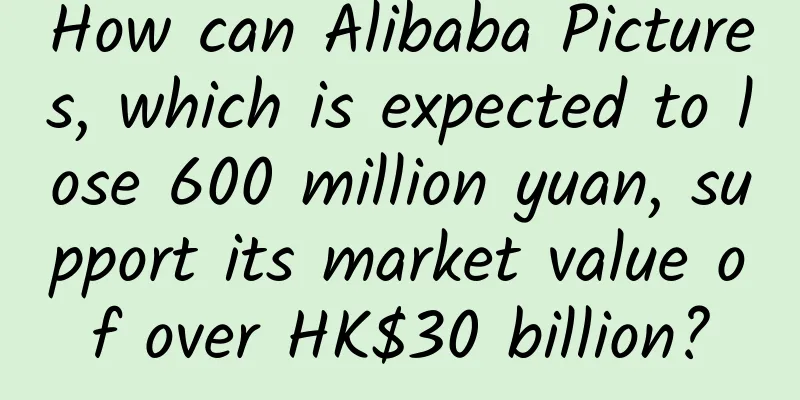Where to find the Belt and Road Initiative? The answer lies in the mother-of-pearl bronze mirror!

|
Where to find the Belt and Road Initiative? The answer lies in the mother-of-pearl bronze mirror! Lv Weitao, Curator at the National Museum of China Zhang JinMember of the Intangible Cultural Heritage Working Committee of China Arts and Crafts Association Ancient bronze mirrors have a long history and the mirror culture has deep roots and leaves In ancient times, bronze mirrors were also called "mirrors" or "zhaozi". In ancient times, our ancestors used water in nature to reflect things, and then put water in pottery mirrors to reflect things. Inspired by the image-forming effect of the smooth surface of bronze tools, bronze mirrors were invented. Bronze mirrors, as daily necessities, have a long history of use in my country. Public data shows that more than 30 bronze mirrors were discovered before the Warring States Period, and the development of bronze mirrors can be traced back to the era of ancient myths and legends. The "Inner Biography of the Yellow Emperor" states: "The Emperor met with the Queen Mother of the West at Wangwu, and cast twelve mirrors to be used with the moon." In the 1970s, three bronze mirrors were discovered in succession in the sites of Qijia culture. Two were unearthed at the Qijiaping site in Guanghe, one with double ring patterns, and the other was a small bronze mirror with a rectangular button (the first mirror in China), plain and without patterns. Another was unearthed from Tomb M25 at Gamatai in Guinan, Qinghai, decorated with a seven-pointed star pattern. The bronze mirrors unearthed at the Qijia culture site pushed the history of the casting and use of bronze mirrors in my country back to around 2000 BC, which is roughly the same time as the earliest region in the world to use bronze mirrors. These ancient bronze mirrors lying quietly in the museum have accumulated 4,000 years of bronze mirror culture, exuding lasting charm, reflecting its splendid art history and cultural history to the world, and embodying the rich and profound cultural connotations of the Chinese nation. Unique mother-of-pearl mirror, bright moonlight and night light In the long course of history, the casting of bronze mirrors of successive dynasties has been constantly developing and innovating, presenting a colorful situation. Among them, there is a type of bronze mirror that attracts attention with its special craftsmanship and gorgeous decoration, which is the mother-of-pearl mirror. "Luo" is the general name for snails and shells, and "dian" means "decoration". "Luodian" refers to a process of processing the shell of a snail into a flat plate, cutting it into various patterns and figures, and then embedding it on the surface of an object. Archaeological discoveries show that mother-of-pearl appeared as early as the Shang and Zhou dynasties. In the early 1980s, a lacquerware unearthed from the Western Zhou Yan State Cemetery in Liulihe, Beijing, was painted with animal-faced phoenixes and bird patterns, which used the mother-of-pearl craft. The mother-of-pearl figure flower and bird mirror, now in the collection of the National Museum of China, is the most exquisite mirror in China's collection and is now a national first-class cultural relic. The mirror is 23.9 cm in diameter, round, with a round button and a slightly curled edge. On the left and right of the button are decorated two noble men sitting on a carpet. The one on the left plays the Ruan string, and the one on the right holds a wine cup. There is a tripod and a pot in front of them, and they play and drink opposite each other. A maid stands behind her, holding a box in both hands. White cranes dance to the music, and the birds on the shore of the pond stop to listen. Above the button is a flower tree with thick branches and lush flowers and leaves. The treetops are like silver plates. Under the tree, a cat squats and rests. On both sides, there are parrots flapping their wings and tails. The ground is full of fallen flowers, creating a warm and peaceful atmosphere with birds singing and flowers blooming. The design is inspired by the conception of the painting "Gao Yi Tu": "Playing the zither under the bright moon, and drinking slowly while looking at the breeze", which is in line with the taste of literati with the leisurely mood and tranquil scenery of the noble scholar. This mirror is not only gorgeously decorated, but also made of exquisite materials. According to research, the shell is a luminous shell produced in the South China Sea, the stamens are inlaid with amber from Yunnan, and the background is covered with lapis lazuli powder from West Asia, which fully reflects the inclusiveness of Tang Dynasty culture. This mother-of-pearl mirror is skillfully crafted, with a full but not blocked composition, and the pattern is meticulously carved. In addition, the shell itself is shiny and bright, and the artistic effect is very outstanding. It is a rare masterpiece among Tang mirrors. Mother-of-pearl mirror with figures, flowers and birds Who is the owner of the bronze mirror? Luoyang is one of the seven ancient capitals of China. Since the Xia Dynasty 4,000 years ago, 13 dynasties, including the Western Zhou Dynasty, the Eastern Han Dynasty, and the Cao Wei Dynasty, have established their capitals here. From the Han Dynasty to the Tang Dynasty, Luoyang has always been the political, economic, and cultural center of the country. In addition, Luoyang is backed by mountains and faces the water, and its terrain is open, making it an excellent place for burials. Emperors and dignitaries of all dynasties are proud to be buried here. According to surveys, there are more than 100,000 ancient tombs in the Luoyang area. Unfortunately, most of these tombs have been looted, and there is a local saying that "nine out of ten tombs are empty." In 1955, more than 1,000 ancient tombs were detected on the construction site on the west bank of Jianhe River in the western suburbs of Luoyang. At that time, China was carrying out the "First Five-Year Plan" and planned to build large-scale projects such as the First Tractor Factory, Bearing Factory, Mining Machinery Factory, and Thermal Power Plant in the western suburbs of Luoyang. Due to construction needs, archaeologists cleaned up some tombs and found this mother-of-pearl figure, flower and bird pattern mirror in a tomb dating back to the second year of Qianyuan (759) of Emperor Suzong of Tang Dynasty. Because this tomb had also been looted and there was a lack of other unearthed evidence, we could not know who the owner of this tomb was. But perhaps it was the carelessness of the tomb robbers that missed this exquisite bronze mirror, and today people are fortunate to have a glimpse of the style of the Tang Dynasty. Mother-of-pearl mirrors are made of expensive materials and require complex techniques. Even in the heyday of the Tang Dynasty, they were high-end luxury goods that were monopolized by the royal family. Therefore, the owner of this bronze mirror must be extraordinary, most likely a member of the royal family or a senior official of the court. However, royal family members or senior officials of the Tang Dynasty were generally buried in the Mangshan area in the north of Luoyang after their death, while this bronze mirror was unearthed from a low-level tomb in the western suburbs of Luoyang, which is obviously very abnormal. Let's go back to 759 AD, the time of the burial of this Tang Dynasty tomb. This was the fourth year of the "Anshi Rebellion", during which Luoyang was occupied twice by rebels from the north. Due to the massacres and looting by the rebels, Luoyang had long been a hell on earth. The owner of this bronze mirror may have died in the war, but he (or she), who was of noble status, could not be buried in Mangshan as he wished, but was hastily buried in the western suburbs of Luoyang. Fortunately, he (or she) also had this bronze mirror representing identity and status buried with him, so that he (or she) could continue the luxury in another world. A handsome guy is not only beautiful, but also has his own unique world in the mirror Mother-of-pearl mirrors, represented by this mirror, pushed Chinese bronze mirrors to the top. This was largely due to Emperor Taizong of Tang’s “Mirroring Thought”: “Using bronze as a mirror, we can correct our attire; using the past as a mirror, we can understand the rise and fall; using people as a mirror, we can understand gains and losses.” This formed the unique “political custom” of the Tang Dynasty—“presenting mirrors” and “giving mirrors as gifts”. After being endowed with political significance, the quality and craftsmanship requirements of mirror making rose to an unprecedented level. With the support of the national strength and overseas trade of the prosperous Tang Dynasty, exquisite products such as mother-of-pearl mirrors were finally created. According to preliminary statistics, there are at least 18 Tang Dynasty mother-of-pearl mirrors discovered so far, of which 11 are collections and 7 are unearthed. All 11 collections are overseas. The 7 mother-of-pearl mirrors discovered by archaeology are from tombs in Chang'an and Luoyang during the reigns of Emperor Xuanzong to Emperor Dezong. Among the 11 Tang Dynasty mother-of-pearl mirrors lost overseas, one is in the British Museum in London, England, and the other 10 are in Japan. The Shosoin Repository of Todaiji Temple in Nara, Japan, has a collection of 9 mother-of-pearl mirrors, which were brought back from China by Tang envoys and treasured by successive emperors. The mirrors are round and sunflower-shaped, with large sizes and mainly decorated with flower and bird patterns. Don't worry about the Silk Road being nowhere to be found, the mirror and the Silk Road are inseparable Mother-of-pearl mirrors are made by pasting various patterns carved from snail shells on the back of plain mirrors according to design requirements, then lacquering, grinding, and finally carving patterns on the mother-of-pearl. The lacquer base is black and the mother-of-pearl is white, projecting an attractive brilliance and splendor in the black and white contrast. In order to make the mother-of-pearl mirror more beautiful, some people fill the lacquer base between the mother-of-pearl objects with blue, green, yellow, red, and white snail shell scraps and fine jade, making it more colorful and colorful. The back of such an exquisite bronze mirror is made of luminous shells and embellished with lapis lazuli. Both of these key raw materials are "imported goods" and came to China via the Maritime Silk Road and the Land Silk Road respectively. The raw material of mother-of-pearl mirrors, lapis lazuli, mostly comes from Central and West Asia. It has bright colors such as dark blue, purple blue, sky blue, and green blue, and is a natural raw material for blue pigments and dyes. During the Tang Dynasty, lapis lazuli, green glass, topaz, green chalcedony, and turquoise, which were tributed by the Western Regions through the Silk Road, were used as inlays on the back of bronze mirrors. In 1877, German geographer Ferdinand von Richthofen first proposed the concept of the "Silk Road" in his book "China", and called the traffic route between Chang'an, China and Central Asia the "Silk Road". Later, German scholar Hermann extended the end of the Silk Road to Syria (which was later incorporated into the territory of the Roman Empire), and determined the basic connotation of the Silk Road, that is, it was an economic and cultural exchange channel from ancient China through Central Asia to South Asia, West Asia, Europe and North Africa. During the Tang Dynasty, the economy was prosperous and culture and education flourished. This was the golden age of the all-round development of the Silk Road. As an important channel for political, economic and cultural exchanges, the Silk Road made a significant contribution to promoting material and spiritual exchanges between the East and the West. On the Silk Road in the Tang Dynasty, merchants and envoys from various countries brought a wide variety of handmade objects. On the Silk Road, which was based on transnational trade, exquisite objects such as coins, gold and silver utensils, glassware, and porcelain were circulated. Xue Aihua's "Golden Peaches of Samarkand: A Study of Imported Goods in the Tang Dynasty" specifically mentions the Persians who came to China along the Silk Road, who taught the craftsmen of the Tang Dynasty how to make gold and silver and inlay jewelry. The introduction of these new techniques and decorative patterns with new themes greatly improved the manufacturing technology and artistic aesthetic quality of gold, silver and precious objects in the Tang Dynasty, expanded the categories of existing luxury goods, and quickly entered the casting base of Chinese bronze mirrors - Yangzhou. These exquisite materials, unique decorative styles and sophisticated manufacturing techniques from foreign countries were quickly used to cast various luxurious special craft mirrors in the heyday of the Tang Dynasty when "extravagance was the norm", especially playing a significant role in improving China's mother-of-pearl inlay technique. Another important raw material for mother-of-pearl mirrors is the luminous shell, which is produced in the South China Sea. It lives in scattered areas, hides during the day and comes out at night, making it difficult to catch. The luminous shell does not glow at night, but refers to the fact that its shell has been polished layer by layer to present a pearl-like silver halo luster, just like the bright moon. During the Zhenguan period of Emperor Taizong of Tang, overseas trade flourished. At that time, the pacification of the northern, northwest and southeastern border troubles and the entry of Princess Wencheng into Tibet - "the northwest border troubles were completely eliminated" provided good objective conditions for the Tang Dynasty's sea and land Silk Road. Internationally, the Tang Dynasty was already the suzerain state in East Asia and Central Asia, with more than 70 countries paying tribute, including Persia, Daqin, India, Tamil, Sinhalese, Dashi, Yuezhi and the "Nine Surnames of the Hu" and so on. The Nanyang countries were on good terms with the Tang Dynasty, and many seaports such as Fujian and Guangdong formed a bustling maritime trade. Since the formation of the Maritime Silk Road, although wars, famines and pirate invasions in various parts of the Indian Ocean brought inconvenience to trade, driven by profits, the enthusiasm of merchants has never diminished, and the countries of the East and the West also attach great importance to overseas trade. At this time, there were many merchants from the Indian Ocean who traded with China along the Maritime Silk Road. They continuously brought precious treasures such as luminous shells, giant clams, pearls, corals, and tortoises. These treasures were deeply loved by the people of the Tang Dynasty, and some of them were used as decorations and inlaid on the back of bronze mirrors. This thing should only exist in heaven, it is rare to see it in the world Mother-of-pearl mirrors were first created in the early Tang Dynasty and became popular during the heyday of the Tang Dynasty. The vast majority of mother-of-pearl mirrors discovered by archaeologists and handed down from generation to generation are works from the heyday of the Tang Dynasty. After the An-Shi Rebellion, the Tang Dynasty was severely damaged, the country gradually declined, and the social economy suffered great damage. It was no longer able to support the luxury of the day. Forced by this situation, the court strictly banned luxury goods including mother-of-pearl mirrors. After the Five Dynasties, mother-of-pearl mirrors basically disappeared. In the thousands of years of bronze mirror development history, mother-of-pearl mirrors are short-lived compared to other bronze mirrors. However, its unique decorative craftsmanship and the elegance and luxury it embodies are uniquely charming. After thousands of years of erosion, the lacquer on the back of the mirror has mostly fallen off, but its delicate mother-of-pearl inlay, the gorgeous pearl luster, and the rich Tang Dynasty atmosphere it exudes are still very appealing, making viewers admire it. The exquisite mother-of-pearl mirror is not only the best in the history of Chinese bronze mirror art, but also reflects the strength of the country in the early Tang Dynasty, the development of trade, the prosperity of cultural integration at home and abroad, the smooth flow of Silk Road civilization, and the subsequent order, chaos, rise and fall. Learn from history. Looking around the world, international trade and cultural exchanges need a stable political environment as a foundation. Trade and exchanges can bring peace, but trade and exchanges also need peace. |
Recommend
How to improve the conversion rate of live streaming sales?
Now everyone is talking about live streaming sell...
A detailed explanation of the marketing and promotion methods of Internet finance from 5 cycles!
This article will reveal the underlying logic of ...
Although we are in the Milky Way, we know the true face of the Milky Way
Produced by: Science Popularization China Author:...
DaVinci Resolve Online Color Grading Course
DaVinci Resolve Online Color Grading Course 1 Ima...
Is Android finally going to launch Google's official QR code scanning library?
I believe that QR code scanning is no longer a no...
In addition to "swan meat", toads also favor swans, dead fish, and even your rain boots?
There is a saying that goes "A toad wants to...
Case study of making money through SEO of regional websites for confinement nanny and housekeeping services!
As long as you have some experience in making mon...
Use celebrity quotes video accounts to earn over 10,000 yuan a month without any threshold
Internal course of the Youzi team: operate the ce...
iOS: How to submit apps to the App Store
The process of submitting a new application is re...
As video regulation tightens, operators urgently need to change their tactics
Before the Internet Security Day on April 29, the...
A must-have website for advertisers, operators, and marketers! (Super full version)
2019 has passed 1/4 … It's time to recharge F...
How to better utilize material and spiritual resources to motivate users?
As long as the product is valuable, people will u...
"Tencent's acquisition of Shanda Literature" is a smokescreen released by Shanda itself
You must have heard such voices in the community,...
Video websites are struggling to make profits. Can Alibaba's TBO break the payment game?
Video websites that are supported by major sponso...
Cases surge! Incubation period 2-8 days! Beware of this virus in the near future →
Recently, the COVID-19 epidemic situation in Chin...









